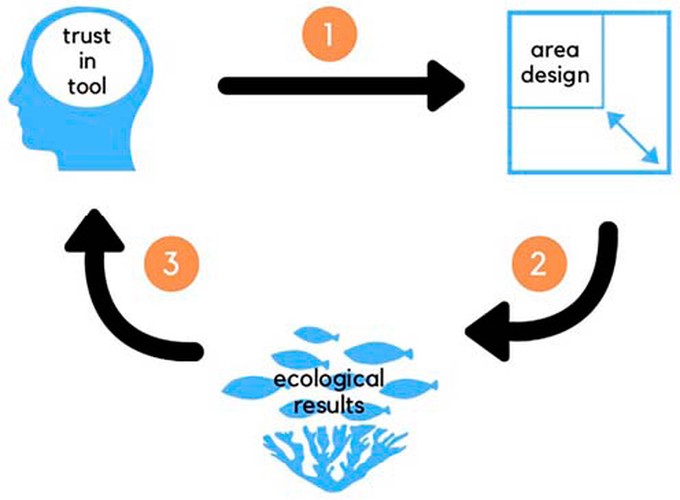 Image credit: Quintana et al 2021
Image credit: Quintana et al 2021
 Image credit: Quintana et al 2021
Image credit: Quintana et al 2021
Marine area-based conservation measures including no-take zones (areas with no fishing allowed) are often designed through lengthy processes that aim to optimize for ecological and social objectives. Their (semi) permanence generates high stakes in what seems like a one-shot game. In this paper, we theoretically and empirically explore a model of short-term area-based conservation that prioritizes adaptive co-management - temporary areas closed to fishing, designed by the fishers they affect, approved by the government, and adapted every 5 years. In this model, no-take zones are adapted through learning and trust-building between fishers and government fisheries scientists. We use integrated social-ecological theory and a case study of a network of such fisheries closures (“fishing refugia”) in northwest Mexico to hypothesize a feedback loop between trust, design, and ecological outcomes. We argue that, with temporary and adaptive area-based management, social and ecological outcomes can be mutually reinforcing as long as initial designs are ecologically “good enough” and supported in the social-ecological context. This type of adaptive management also has the potential to adapt to climate change and other social-ecological changes. This feedback loop also predicts the dangerous possibility that low trust among stakeholders may lead to poor design, lack of ecological benefits, eroding confidence in the tool’s capacity, shrinking size, and even lower likelihood of social-ecological benefits. In our case, however, this did not occur, despite poor ecological design of some areas, likely due to buffering by social network effects and alternative benefits. We discuss both the potential and the danger of temporary area-based conservation measures as a learning tool for adaptive co-management and commoning.